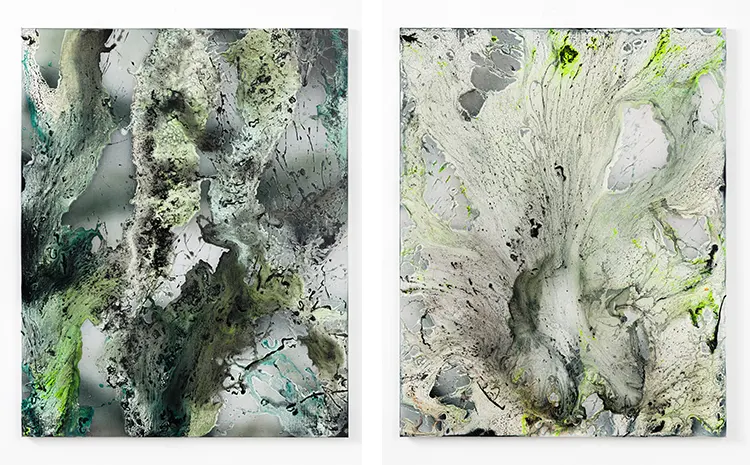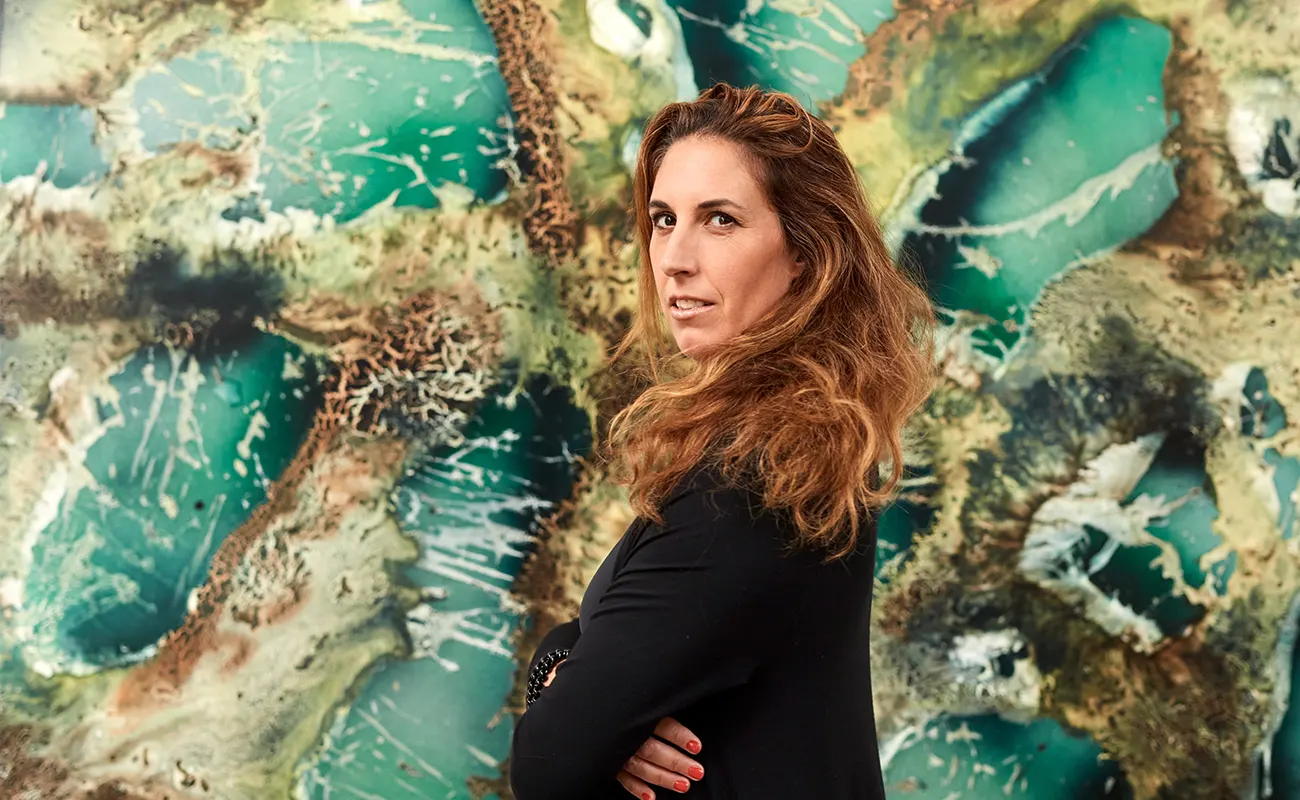“The authenticity of my work is derived from the inherent presence of mistakes.”
Márta Kucsora: Origins in a Constrained Landscape
The journey of Márta Kucsora (Website/Instagram) into the art world began in an unlikely setting – the confluence of the Tisza and Danube Rivers in Szeged, Hungary. Raised in a milieu where women were instilled with strength and independence, Kucsora faced the dual challenges of societal constraints and limited resources in her early artistic endeavors. In her formative years, art became a sanctuary against the shadows of bullying, offering a refuge where she could cultivate her creativity. Yet, university life in communist Hungary presented its own set of challenges: shared studios were cramped, resources scarce, and large-scale thinking was often stifled. Despite these obstacles, Kucsora’s resilience and passion for art persisted, shaping her into the groundbreaking artist she is today.
Her approach to large-scale painting, as discussed in an interview with curator Viola Lukács, reveals a harmonious blend of physicality and fluidity. This unique style was showcased at the Deji Art Museum in Nanjing, China, where her expansive canvases engage the viewer in a dynamic and immersive experience. Kucsora’s technique, akin to a dance, involves a tactile interaction with the canvas, creating a dialogue that challenges uniformity and invites viewers to traverse the nuanced materiality of her work. This interplay of physical engagement and artistic expression underpins the mesmerizing allure of Kucsora’s large-scale paintings.
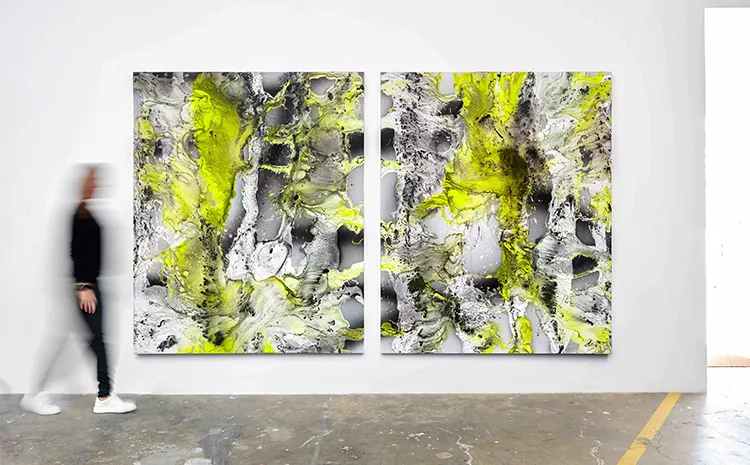
A Conduit Between Micro and Macrocosm
Delving deeper into the artistic process of Márta Kucsora reveals a profound connection to nature and movement, pivotal elements in her exploration of abstraction. Her intuitive approach to materials, as she describes, facilitates a fusion of different techniques, often leading to the misuse of conventional methods. This experimental attitude towards media choice, including ventures into video and glass, underscores her commitment to confronting and blending various artistic methods. Kucsora’s recent paintings, inspired by the intricate theories of quantum physics, reflect an associative narrative that captures the era’s overwhelming flow of information and linear progress. Her work transcends the limitations of understanding complex scientific concepts, instead translating her learning process into a visual language that captivates the viewer.
The importance of intentional complexity in her work was highlighted in her exhibition at the Kepes Institute. Aligning with György Kepes’ legacy of light and kinetic art, Márta’s layered compositions invite a renegotiation of visual and conceptual elements. This strategic layering of paint challenges conventional notions of spatial and visual coherence, contributing to a rich visual narrative. The recognition of this complexity by Marton Orosz, director of the Vasarely Museum, led to a duo exhibition in the United States, further cementing Kucsora’s impact on contemporary art.
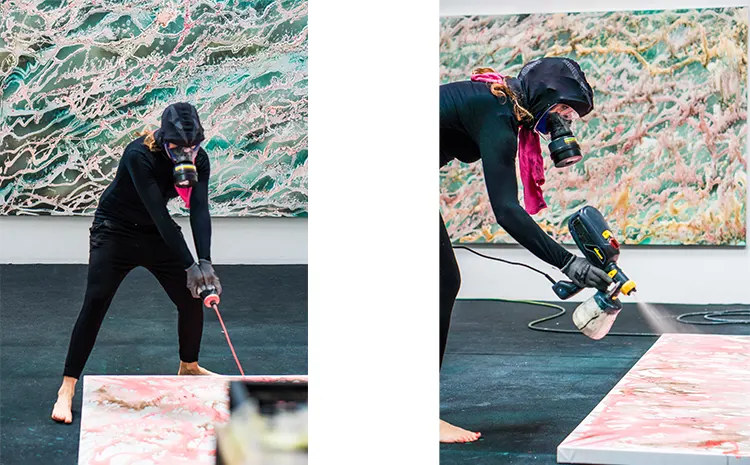
Márta Kucsora: Embracing Unfinished Narratives in Artistic Creation
Márta Kucsora’s perspective on her art being perpetually unfinished plays a critical role in her creative process. This outlook allows her to explore continuously, viewing each artwork not as a completed entity but as a segment of an ongoing, non-linear narrative within the vast expanse of painting history. This approach echoes the evolving nature of art, contributing to a dialogue that extends beyond her individual work to the broader realm of visual culture. Kucsora finds parallels in the works of Bill Viola, particularly in their shared focus on the relationship between nature and time. Her decision to forego traditional framing techniques further emphasizes the boundless, Möbius strip-like quality of her works, blurring the lines between temporal and spatial constraints.
The digital age, despite not being a direct influence, has inevitably seeped into Kucsora’s work. In a world increasingly shaped by the internet and generative AI, human-made paintings like hers offer a counterpoint to the artificial race of information imitation and reproduction. Kucsora’s authenticity stems from the inherent presence of mistakes and the human touch, providing a stark contrast to the perfection often sought in digital realms. This juxtaposition highlights the unique value and irreplaceable nature of human creativity in an era dominated by digital aesthetics.
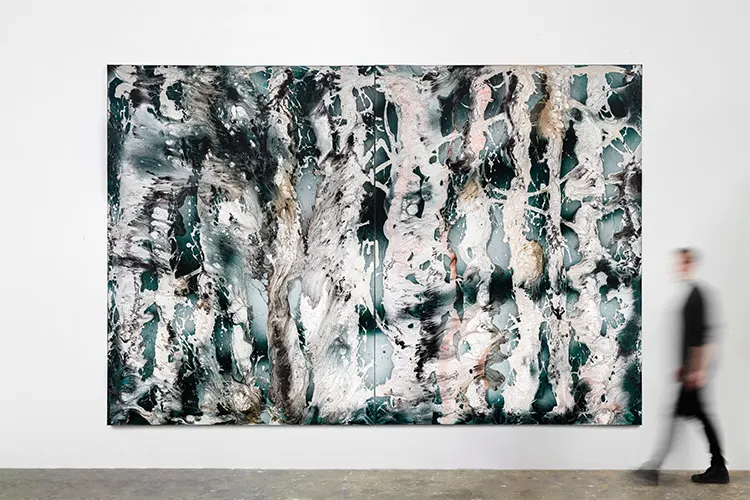
Intersecting Roles: Artist, Mother, and Community Builder
Márta Kucsora’s identity is multifaceted, encompassing the roles of artist, mother, and creator of creative spaces. Balancing these intersecting roles presents unique challenges and triumphs, as she navigates the complex landscape of contemporary art while managing a family and fostering a community through her studio. This journey underscores the modernist ideal of a working woman who excels in multiple domains, including professional achievements and family responsibilities. Kucsora acknowledges the risk of burnout in this endeavor, emphasizing the need for supportive environments that dismantle the barriers built by societal expectations.
Her collaborative methodology is evident in her new media works, where collective efforts in recording, editing, and crafting sound for video series are integral. Kucsora’s interest in community connections and global networking transcends the boundaries of art production. Her involvement in the Budapest Art Factory (BAF) since 2006 exemplifies her commitment to collaborative creation and redefining artistic production. This project, aimed at decolonizing the art industry, highlights the importance of adaptability and the interplay between original intentions and external influences. Kucsora’s artistic practice is deeply intertwined with her social, professional, and personal interactions, shaping the evolution of her artworks over time in an unpredictable and dynamic manner.
BAF not only serves as a platform for artistic expression but also acts as an amplifier, diving into the complexities of artists’ processes and fostering a culture of reflection and discussion. The collaboration with New York’s Postmasters Gallery and the establishment of a new location indicate BAF’s expanding influence and its role in enriching Budapest’s art scene. Through curated exhibitions and dialogues, BAF has become a hub for global curators and artists, embodying Kucsora’s vision of an artist-run initiative with a unique governance model, further contributing to the discourse surrounding contemporary art.
